1 (1) Stella Artois
SALES: £527.0m GROWTH: -2.1%
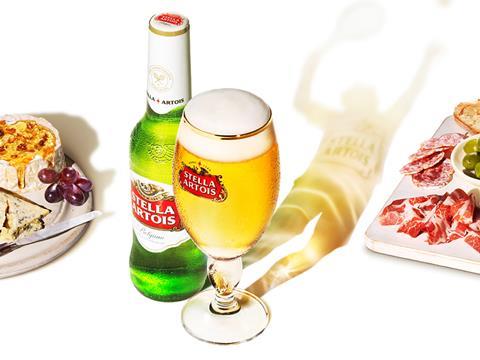
Britain’s biggest booze brand is doing its best to bury the ‘wifebeater’ sobriquet it picked up in the 1990s. It’s no longer for chugging from a tankard to slake a hard-earned thirst, as it so often was in the Stella ads of that decade. Now it’s for sipping from a slender chalice while nibbling on olives and charcuterie in front of the tennis. How sophisticated!
Its choice of sponsorships in recent years has been key, says AB InBev head of trade marketing Jessica Markowski. As Carling (5), Carlsberg (11) and stablemate Bud (4) have gone after footie fans through tie-ups with the ‘beautiful’ game, Stella has courted a more refined crowd, partnering with Wimbledon, Ascot and golf’s Open Championship.
“There are a lot of other premium lagers in the category and linking Stella Artois to iconic events has definitely helped,” says Markowski. “A lot of growth has been through these and in-store activations.”
These tie-ups also drove bottled sales, which Markowski says boosted the brand’s penetration and brought new shoppers to the brand. The gradual switch from cans to Stella’s trademark emerald green bottle is also helping to drive the average price of the core 4.8% abv lager up. Sales are up 2.3% to £487.8m on volumes that have dipped 0.1%, driven by a variety of initiatives, says Markowski.
“We have had a great in-store presence this year through our limited-edition multipacks and chalices,” explains Markowski. “Our seasonal-led advertising and marketing have also had an impact.”
It’s worth noting that a litre of Stella Artois sells for more than all of the forementioned lagers, significantly more in the case of standard lagers Carling, Carlsberg and Foster’s (3). The cheapest, Carling, sells for an average of 62p less. These brands have two key things in common: all three rely exclusively on the can format and none of them contains more than 4% abv. The supers are cutting space for such cheaper, weaker canned lagers.
This pattern might be benefiting Stella Artois, but it’s hitting other parts of the portfolio hard. Stella 4 was completely delisted by Sainsbury’s and Waitrose in the first quarter of 2017, with Asda following suit in May. With Tesco the only major multiple still stocking the lower abv spin-off, sales have crashed by almost a fifth to £16.4m, leading some to speculate that its days are numbered. Still, Markowski insists it has a future: “It is still a key part of our portfolio and there are no plans to discontinue it.”
It’s a similar story in cider. Ranges have been ruthlessly rationalised in a bid to end duplication and drive value back into the fixture. Stella Cidre has been the biggest casualty, as higher value brands such as Thatcher’s (54), Kopparberg (16) and Westons (57) have won space. Morrisons delisted Cidre in April, followed by Sainsbury’s in May. Waitrose also stopped selling it, and many of its SKUs were delisted across Tesco and Asda, although it regained three listings in Asda in late May. “It’s challenging,” says Markowski. “There have been a lot of new players and yes, we have seen some volume decline as result of range rationalisation.”
As a result, Cidre’s five variants are down £22.7m (44.9%) combined, the greatest loss of any cider brand in the top 100 and the biggest contributor to the overall Stella brand’s decline. As in beer, current trends are favouring higher value bottled ciders - see the success of Smirnoff’s (2) Cider for further proof. A year ago AB InBev told us that Cidre’s then widespread availability in cans had devalued the brand. The focus continues to be on bottles, says Markowski.
“With the growth in cider driven by the more premium side of the category - traditional and world ciders - this is where we will focus our future efforts,” she says.
“We are still seeing some growth and we are optimising the range to make sure we’re available for consumers who like to buy the brand.
“We just need to focus on our credentials as a different kind of offering, which is the Continental side.”
And despite many of Britain’s biggest retailers’ apparent lack of faith in Cidre, Markowski says there is still plenty of cause for optimism. The brand is looking to drive sales over the summer - or ‘Cidre Season’ as AB InBev has renamed it - by pushing it as a perfect picnic accompaniment.
“Summer and Christmas are key trading periods for us and we’ve still got the summer ahead,” says Markowski.
“We’re expecting to see a turnaround in the cider category just because it is such a seasonally driven brand.There are currently no plans to discontinue Stella Artois Cidre.”
The Top 100
2 (2) Smirnoff
SALES: £487.6m GROWTH: +2.8%
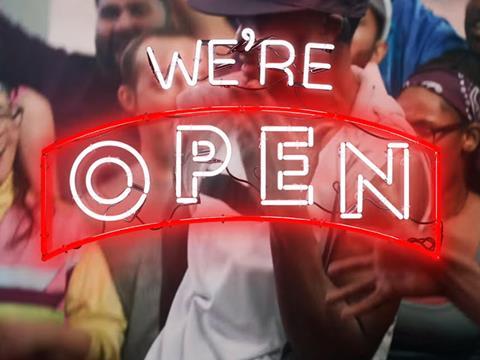
Could Britain’s biggest vodka’s recent foray into cider do for the brand and the category what the 1999 launch of Smirnoff Ice did for alcopops and Smirnoff? Diageo off-trade sales director Guy Dodwell thinks so.
“When Smirnoff Ice broke 17 years ago, it drove a huge amount of marketing halo, gained a huge amount of awareness and attracted new consumers to the overall brand,” he says. “Smirnoff Cider can do the same. It’s brought something new to flavoured cider and driven growth in the overall Smirnoff trademark.”
Since launch last June, the three-strong range of ciders - in raspberry & pomegranate, passionfruit & lime and mandarin & pink grapefruit - has racked up £6.3m, filling some of the space left by the cuts to other flavoured cider ranges such as Bulmers (48) and Magners (49). That makes it the second biggest contributor to Smirnoff’s £13.4m growth.
The biggest contributor is the core No 21 vodka, which accounts for nearly 90% of Smirnoff’s total. Sales are up 2.8% to £437.9m on volumes up 4.3%. Average price has dipped as a result of stiffening competition between the mainstream mults and the discounters, while Diageo has ramped up ad spend on the brand, kicking off the latest phase of Smirnoff’s We’re Open campaign in March with TV ads featuring a deaf dance teacher.
“We’re taking the lion’s share of media in the vodka category,” says Dodwell. “Our promotional strategy is very consistent, but the retailers are working hard in a very competitive market around market share. Smirnoff is obviously a big player in spirits so is used as a big driver of spirits sales.”
It’s not all been sunshine and rainbows, however. Sales of 2013 launch Smirnoff Gold have plummeted, as have Smirnoff Ice and Smirnoff Ice Black. With sales of Gold now just £1.7m and Ice’s combined sales only £1.2m, their days could be numbered.
3 (3) Foster’s
SALES: £404.1m GROWTH: -8.1%
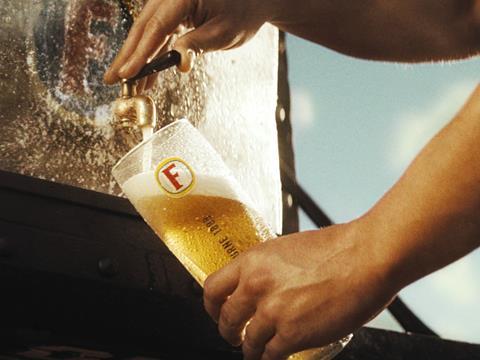
To think that three years ago just £20m separated Foster’s, then Britain’s number two booze brand, and Stella. We even said the Heineken owned-brand was about to usurp the number one spot.
How times change. Today Foster’s is worth £88.3m less than it was back in 2014 and it’s dropped a place in the rankings. This year sales have
crashed £35.6m - the third biggest loss of the year - as it’s suffered big space losses in the mults’ range reviews.
The flagship lager still has a major presence in the mults, but its share of shelf is falling as retailers divert more shelving to higher margin imported lagers and craft beer. It’s fallen 5.9% to £380.3m. The rest of the range is in even worse shape.
Foster’s Rocks, the only other spirit beer in the top 100 apart from Desperados (56), lost its only supermarket listing in Morrisons in February and Foster’s Radler cloudy lemon beer lost its sole slot in Sainsbury’s just weeks later. Foster’s Gold, the brand’s premium 4.5% abv brew, suffered a similar fate, falling by more than a third to £16.7m.
With the core lager now accounting for 94.1% of Foster’s sales, up from 91.9% last year, Heineken is concentrating its marketing on this line and tapping dominant trends: provenance, heritage and craft.
“Heineken is continually conducting research into consumer trends and shopper needs to ensure our brands are constantly evolving to be relevant and entice customers,” says category & shopper marketing director Toby Lancaster. “Our core brands need to remain fresh.”
The current campaign carries the tagline ‘Crafted to Refresh’ with TV ads featuring the brand’s 19th century founders delivering beer to parched cricket players in the Australian Outback. It’s also set its sights on reclaiming share among younger male customers by partnering with viral news website Unilad.
There’s a lot riding on Foster’s bid to reinvent itself around its ‘refreshment’ credentials, and with the supers prioritising pricier, higher abv lagers it has its work cut out. If both Foster’s and Bud (4) continue their current trajectories, Foster’s will find itself in the fourth spot this time next year.
But, as recent history shows us, that’s a big ‘if’ indeed.
4 (6) Budweiser
SALES: £368.7m GROWTH: +18.6%
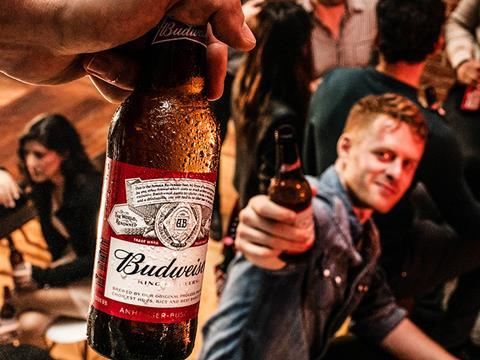
Boom! Bud has served up the year’s greatest gain, worth a lip-smacking £57.8m. That’s almost twice the size of second greatest grower Grouse’s (10) advance.
Bud’s boom is partly a sign of the times - it’s won some shelf space lost by cheaper standard lagers such as Carlsberg (11) and Foster’s (3) - but, still, it’s left nothing to chance, spending big on (mainly football-orientated) marketing and targeting growth in the convenience channel.
“We’re seeing change of shopper habits away from big weekly shops to smaller, more frequent trips across multiple outlets,” says AB InBev head of trade marketing Jessica Markowski. “This creates opportunities for Budweiser.”
The core lager contributed £55.1m to the growth. Bud Light, relaunched in the UK in February, delivered £4.4m.
5 (4) Carling
Sales: £322.8m Growth: +1.1%
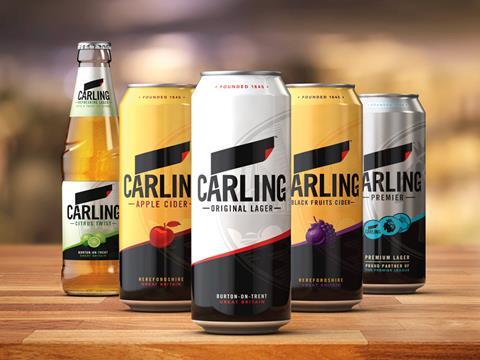
The top 100’s cheapest lager has shifted an extra 565k litres (2.8%), adding an extra £3.6m and proving there’s still space for standard lager in the supers.
Yes, that space is being squeezed as retailers switch to pricier lagers such as Bud (4) and even pricier craft beers like BrewDog (65), but Carling has managed to mop up some of the facings lost by rival standard lagers in the range reviews.
This boils down to two crucial elements: price and brand stewardship. Selling at an average of £1.56/l, it’s been undercutting Carlsberg (11) and Foster’s (3), as Molson Coors has continued to invest in Carling. February saw the relaunch of Carling Cider (after predecessor British Cider suffered a slew of delistings in 2016), Carling Premier and the unveiling of a new look for the brand.
6 (5) Hardys
SALES: £293.6m GROWTH: -4.5%
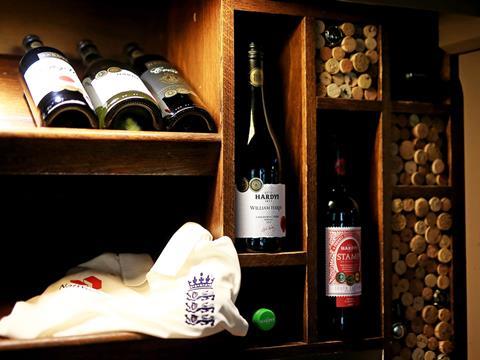
Wine is struggling right now, particularly the Australian stuff. “The loss of half-price promotions means shoppers are buying less,” says Paul Hillier, marketing director at Hardys’ owner Accolade. “Some have switched out of wine altogether into ‘on trend’ craft beer and even adult soft drinks.”
So Britain’s biggest wine brand has been hit hard, losing £13.7m of its value as volumes sank at the same rate (4.5%). However, Hillier says the number of shoppers buying off-deal has increased, showing “thriving brand loyalty”. Its sponsorship of the England Cricket Board is expected to drive sales going forward, with plans to boost its visibility with advertising, promo and limited-edition packs, in-store point-of-sale materials and a social media push.
7 (8) Strongbow
SALES: £283.6m GROWTH: +3.9%
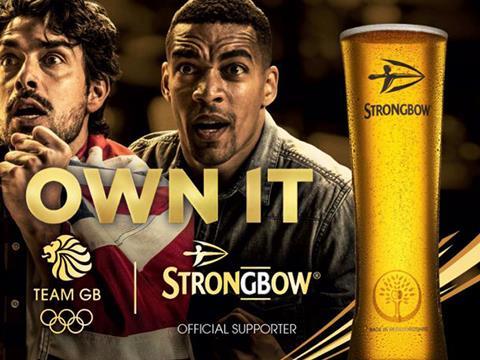
Strongbow is going to the dark side. As Original, Pear and Citrus Edge fall off a cliff, Dark Fruit is up 32.9% to £91.1m.
Not that owner Heineken is turning its back on apples. Even flavour variants contain them and Original still makes up 63.3% of Strongbow’s value. It’s more a case of encouraging drinkers to splash out more by launching pricier new variants.
2015 launch Cloudy Apple, which has seen sales more than double to £10.1m, is a case in point. With an average price of £2.33/l, it sells for 68p more than Original. Dark Fruit has fetched an average of £2.36.
And so overall growth is being driven by the shift to pricier products. Its £10.6m gain comes on volumes up just 0.7%. The days of Citrus Edge and Pear, worth just 400k and £2.3m, look numbered.
8 (9) Jack Daniel’s
Sales: £222.7m Growth: +1.2%
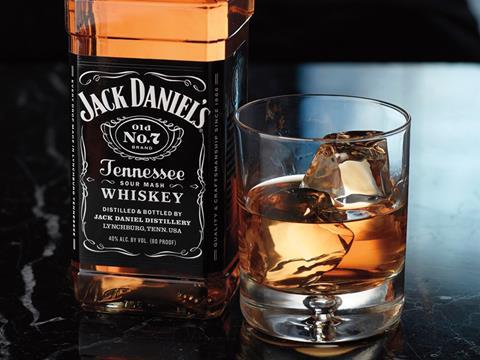
Jack was crowned Britain’s biggest whiskey brand in last year’s report. And it’s retained the top spot despite the core Tennessee whiskey’s 0.5% dip on volumes down 1.5%. How?
By spreading its bets with a broadened portfolio. Tennessee Whiskey’s share of brand value has fallen 1.2% points to 69.3%, as Jack has pushed further into premixes and new flavours. JD & Cola is up 14.3% to £20.4m; Tennessee Honey & Lemonade is up 43.5% to £2m; cinnamon whiskey Tennessee Fire is up 58.9% to £5m.
This summer it’s pushing NPD Lynchburg Lemonade and Tennessee Cider - the latter inspired by Smirnoff’s (2) success in the growing ‘spider’ sector. “It’s gaining very strong traction with consumers,” says head of commercial planning & activation Crispin Stephens.
9 (12) Gordon’s
SALES: £213.0m GROWTH: +12.6%

It’s about time a gin made it into Britain’s top 10 bestselling booze brands, given the current vogue for Mother’s Ruin. But for all the talk of small craft and super premium gins, it’s the biggest (and one of the cheapest) that’s delivered most growth.
Gordon’s is up £23.9m, the greatest growth of any of the four gin brands in the top 100 and the seventh biggest in the overall ranking. This is down to a number of factors including a pack redesign, big marketing investment (particularly in outdoor advertising) and regular £15/litre deals in the mainstream mults as they attempt to stem their losses to the discounters.
“The gin category is particularly vibrant at the moment and a lot of the credit for that has to go to the new entrants - they have done a lot for gin as a whole,” says Diageo off-trade sales director Guy Dodwell. He adds that the influx of new gin brands into the supermarkets has resulted in more space being devoted to gin as a whole, benefiting the market leader. “The proliferation of gin listings in the retailers has driven higher visibility and space in-store in gin and this is benefiting Gordon’s,” he continues. “Some areas, like standard lagers, flavoured ciders and blended whisky have become squeezed in store and other areas have expanded considerably.”
Lower prices have also played a part in Gordon’s growth. A litre of the brand’s London Gin, which accounts for 82.2% of total sales, has been selling for an average of £17.63 over the past year, down 2.3% on the previous year. The average price of premixed Gordon’s G&T and Sloe gins has also fallen considerably, helping to drive growth for these variants.
Further growth will come from NPD and smarter merchandising, suggests Dodwell. “There’s an argument for spirits and mixers to be merchandised together more often and we’re working with mixer companies and retailers to drive this,” he says.
“The category is very hot and we’re looking to drive it hard with a couple of new innovations, which we’re looking to launch soon. I wish I could tell you about them now but rest assured, The Grocer will be the first to hear about the news.”
So watch this space!
10 (13) Grouse
Sales: £209.9m Growth: +15.9%
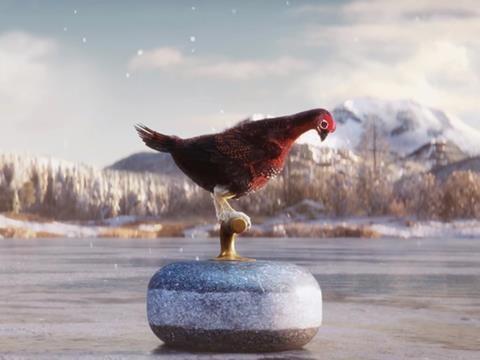
That a litre of Famous Grouse has been selling for more than a pound less than back in 2015/16 makes it clear: blended Scotch remains one of booze’s most price-sensitive sectors.
But that’s not stopped Grouse from turning in the second greatest gain of the year, worth £28.7m, and almost reversing the £30.7m loss we reported a year ago. Price is crucial - fetching an average of £17.61/l, the core Famous line is now significantly cheaper than Bell’s (15) - but it isn’t everything.
With Scotch sales spiking at certain periods throughout the year - particularly Christmas and Father’s Day - timing is also key.
Grouse has cashed in on these events with high profile £15/l featured space deals, targeted ads, gift packs and personalised bottle deals.
11 (7) Carlsberg
Sales: £209.1m Growth: -24.4%
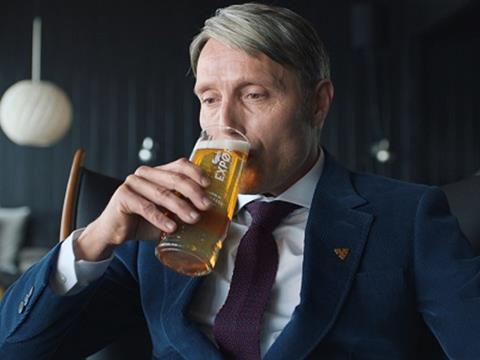
Another rotten year for Denmark’s biggest beer. The expectation that Tesco’s 2015 decision to axe Carlsberg would lead to further losses of space has been realised. It’s lost more than anyone in this ranking: £67.6m. That’s only £1.8m less than 2016/15’s loss.
But it’s not giving up without a fight. “We’re being extremely proactive to turn around the decline in sales,” says VP for sales Alistair Gaunt. “We recognised that we needed to address the decline in lager sales and undertook a year-long research project to understand what was driving these trends and how we could address them.”
It’s certainly been busy, spending £15m on new ads starring Danish actor Mads Mikkelsen (right) and tying up with music festival organisers Live Nation. In January, the standard lager (down £36.4m or 22.2%) got a limited-edition pack redesign titled the ‘The København Collection’. Export (down £22.5m or 29.8%) got a new look last autumn, with the brand’s trademark green replaced with white, and its Danish provenance and heritage emphasised on pack.
The aim is to lure millennials back to the brand with a suave new image playing on its Danish roots. It could work. After all, Mikkelsen is a world away from the high vis-clad Stuart Pearce who made bulk beer deliveries to building sites in a 2016 ad campaign.
12 (11) Echo Falls
Sales: £179.2m Growth: -6.1%
Echo Falls Fruit Fusion is up 18.7% to £59.7m. Not bad given it’s only three years old. But this didn’t make up for its still wine’s £20.9m loss. Of Accolade’s five top 100 brands, only Mud House (89) is up.
13 (10) Blossom Hill
Sales: £177.0m Growth: -17.5%
Blossom Hill suffered the biggest loss in wine, and the second biggest overall. Sales fell £37.4m despite a packaging revamp and an overhaul of its Fruit Bloom range, renamed Spritz and put in a 250ml can.
14 (14) Glen’s
SALES: £152.0m GROWTH: –7.6%
Value voddy Glen’s hasn’t had a gain in this report since 2011. It’s problem is twofold: it’s no longer that cheap – a litre of Russian Standard (21) costs 42p less – and it lacks Smirnoff’s (2) marketing firepower.
15 (15) Bell’s
SALES: £151.9m GROWTH: –9.9%
There’s a right ding dong going on in Scotch right now. With the supers prioritising US whiskey and craft spirits, Grouse (10) and Grant’s (39) have undercut Bell’s and owner Diageo has diverted spend to NPD Haig Club.
16 (20) Kopparberg
Sales: £146.3m Growth: +14.9%
Even if you forget the £2m Kopparberg Fruit Lager has racked up since launch last year, this is still the year’s strongest cider brand, with growth of £17m. Big distribution gains and new 330ml cans are to thank.
17 (19) Kronenbourg 1664
SALES: £132.9m GROWTH: +10.1%
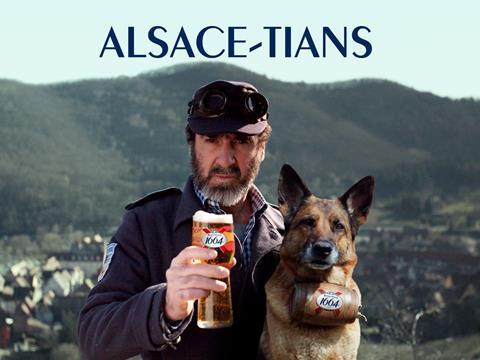
Big ad spend and keen pricing have served 1664 well. It’s up £12.2m as average price fell 3.3% to £2.18/l. Ads starring Eric Cantona trumpeted the UK-brewed beer’s Alsace roots to tap the world lager trend.
Salut! Heineken’s French lager gained from shoppers’ budding enthusiasm for ‘world’ brands (even if large quantities of the stuff are brewed in Manchester). Its sales growing by £12.2m this year, boosted by a small but significant drop in price - it now costs an average of £2.18 per litre, matching its rival Stella Artois (1), which costs £2.19 on average. When it comes to Kronenbourg’s advertising strategy, the old adage “if it ain’t broke, don’t fix it” applies. Its performance was bolstered by a push which saw iconic French footballer Eric Cantona yet again enlisted as the face of the brand.
18 (18) McGuigan
Sales: £130.8m Growth: +7.8%
Focusing on the convenience sector has paid off. As other Aussies’ sales fell, McGuigan gained £9.5m. TV campaign Bring a McGuigan also helped, as has a raft of NPD including a Black Label Malbec.
19 (31) Corona
Sales: £125.3m Growth: +28.8%
Corona is up £28m, thanks to big marketing spend and new listings. AB InBev says the 12x330ml bottle pack is the top seller. It wants to sustain growth with PoS material such as branded gondola ends.
20 (29) Barefoot
Sales: £125.2m Growth: +28.0%
Barefoot had the most growth in wine (£27.4m) and overtook sister brand Gallo (31) to become Britain’s fourth biggest wine. ‘Flavourful but affordable’ NPD such as a shiraz cabernet and pink pinot grigio have helped.
21 (16) Russian Standard
SALES: £125.1m GROWTH: +1.9%
Lower prices alone don’t seem to be pressing vodka drinkers’ buttons any more. Russian Standard may be 59p/litre less than Smirnoff No 21 (2), but it’s losing share to the latter brand’s marketing might.
22 (23) Peroni
SALES: £121.9m GROWTH: +13.8%
Italian import Peroni’s owner has changed (Asahi took over in October); sales remain true to form. The classy House of Peroni entered its fourth year in 2016, helping convince drinkers it’s worth its high price (£3.83/l).
23 (17) Bacardi
Sales: £117.9m Growth: -3.7%
A new design and Spanish names (Blanca, Oro, etc) in 2015 haven’t helped Bacardi. Only Oakheart is up, by 6.1% to £7.9m, as it loses share to Capt Morgan’s (25) new (cheaper) white rum and Spiced line.
24 (21) Casillero Del Diablo
Sales: £116.0m Growth: +2.2%
Brits like South American wine for its drinkability and low prices; retailers because it lessens their reliance on the old world. So Concha y Toro’s star brand is up £2.5m. Ads and Sky Movies sponsorship are helping.
25 (27) Captain Morgan
SALES: £115.1m GROWTH: +16.1%
The Captain’s ship shape as it steals share from Bacardi (23). Bestseller Spiced has contributed most to the £16m growth - £8.5m - followed by the white rum launched in 2015, which delivered an extra £3.4m.
26 (22) Bailey’s
SALES: £107.8m GROWTH: +2.2%
More evidence of Diageo stretching brand boundaries, Bailey’s launched iced coffees in March. They’ve already racked up £300k. The brand’s £2.3m growth was driven by Original and new Spiced Pumpkin.
27 (28) San Miguel
SALES: £105.8m GROWTH: +5.7%
San Miguel’s £5.7m growth is price-driven - volumes have inched up 0.1% - thanks partly to growth for the 660ml bottle. The £2.59/litre average price has been justified by short films about ‘enriching experiences’.
28 (25) Guinness
SALES: £102.4m GROWTH: +1.5%
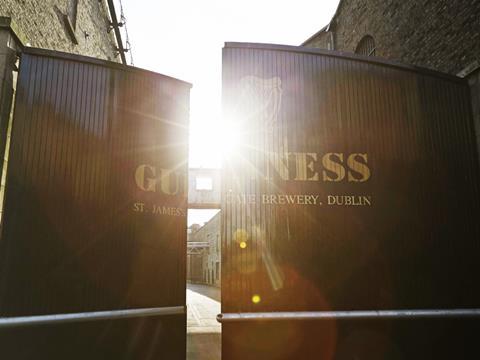
Growth might be slowing but Guinness is still in the black, with sales up £1.5m (a year ago it was up £7.6m). That this is Guinness’s third consecutive year of growth following a period of decline is significant: it’s almost three years since Diageo launched its Brewers Project range.
“We’ve learned a lot from the Brewers Project,” says Diageo off-trade sales director Guy Dodwell. “The shopper wants to be excited with new products. The standout success of the West Indie Porter we brought out under the project has demonstrated there’s a real market for products that are unique and not easy to replicate.” Indeed, with sales up 2.1% to £4.5m, Guinness West Indies Porter is by far the most successful product under Brewers Project (apart from craft lager Hop House 13, now worth £6.7m, but not included as a Guinness product here). Guinness Golden Ale and Dublin Porter, meanwhile, have suffered combined losses of £1.3m.
This, says Dodwell, demonstrates the importance of differentiation. “The project will thrive on the speed at which we can bring out new products.” Nevertheless, most growth for Guinness has come from the core Draught product. This, again, is down to the success of Brewers Project, says Dodwell. “It has brought people back into the core product.”
29 (30) Isla Negra
SALES: £101.1m GROWTH: +4.9%
Concha y Toro puts Isla Negra’s £4.7m gain down to a focus on “delivering value”. The list’s joint cheapest wine, along with Banrock Stn (98), is investing in targeted merchandising and growth in convenience.
30 (26) Jacob’s Creek
SALES: £98.9m GROWTH: +0.9%
Britain’s third-biggest Aussie wine grew £900k, despite a 24.1% fall to £7m for the pricier Classics line. The brand says innovation is key to engaging shoppers, pointing to its new Double Barrel Matured Shiraz.
31 (24) Gallo
Sales: £98.5m Growth: -0.3%
Gallo’s sales are recovering after a steep loss a year ago. Volume is up 1.2% thanks partly to keen pricing on its core lines and ads.
Lower abv Spritz didn’t fare so well, losing a third of sales. It’s now launched a strawberry line.
32 (35) Campo Viejo
SALES: £94.7m GROWTH: +15.5%

Britain’s bestselling Spanish wine is the year’s second fastest growing plonk, after Barefoot (20), up a cool £12.7m.
“Consumers are opting to drink less but better,” explains Pernod Ricard UK commercial director Chris Ellis. “Premium wines have a huge role to play for retailers. If they’re not available, it closes the door to potential sales.”
Campo, which has been selling for a hefty average of £9.15/litre in the past year, has gained shelf space in the supers’ range reviews. Meanwhile, cheaper brands such as Blossom Hill (13) and Lindeman’s (51) have lost space as SKU counts have been cut.
Pernod has also invested in cementing Campo’s position as a classy, drink-at-home wine. A major push this year saw the brand - and its sister wine Jacob’s Creek (30) - offer customers the chance to win thousands of £40 vouchers for takeaway dinners via promotional neck tags on more than 1.8 million bottles.
The 2016 launch of white Campo Rioja Viura-Tempranillo Blanco is attracting newcomers to Spanish wine, adds Ellis. “White wines from Rioja are enjoying great success in their native Spain and our goal has been to prove there’s a great opportunity in the UK,” he says. Blanco has built on listings in Tesco and Sainsbury’s to pick up a slot in Waitrose’s wine roster in May.
33 (32) Yellow Tail
Sales: £92.1m Growth: +0.9%
Not bad compared with the other Aussie wines on this list. But things could get tougher for Yellow Tail. It suffered delistings in Asda as part of a range revamp that primarily focused on pricier plonk.
34 (42) Coors Light
Sales: £87.5m Growth: +24.2%
Up £17.1m, thanks to ads with Jean-Claude Van Damme and a swathe of promotions in the mults. It’s not gone unnoticed; AB InBev launched Bud Light (4) in March, undercutting Coors Light by 29p/l.
35 (33) Beck’s
Sales: £87.3m Growth: +2.1%
Beck’s hasn’t grown in this list since 2011. Now it’s up £1.8m as the supers switch to stronger lagers - Bier is up 6.2% to £66m; Vier fell 58.2% to £3.3m - and drinkers cut down: 0.1% abv Blue is up 12.9% to £17.4m.
36 (40) Bombay
Sales: £78.0m Growth: +12.1%
Bombay has had a heady year. Much of its £8.4m growth has been price-driven (volume rose 9.1%). Pricier Sapphire is up nearly a fifth to £59.6m; cheaper Bombay Dry fell 3.4% to £18.4m as Gordon’s (9) stole sales.
37 (36) Whyte & Mackay
Sales: £75.4m Growth: -6.0%
It’s the cheapest Scotch in the top 100. And, at £16.99 a litre, it’s 1.4% cheaper than in 2015/16 thanks to growing reliance on litre deals in the supers. Now it’s banking on a partnership with the recent British & Irish Lions Tour.
38 (38) Wolf Blass
Sales: £74.4m Growth: -0.7%
A 1.9% dip in average price did wonders for Wolf Blass’ volume sales but wasn’t enough to drive value. Rugby, yet again, featured heavily as it brought back its ‘rugby bottles’ in time for the Six Nations this year.
39 (34) Grant’s
SALES: £72.2m GROWTH: –12.9%
Grant’s has been undercut by Whyte & Mackay (37) and out-marketed by Grouse (10). All six of Grant’s key lines are in decline. Core Family Reserve Scotch contributed £9.1m to the brand’s £10.7m loss.
40 (39) John Smith’s
SALES: £71.1m GROWTH: -3.0%
Heineken’s 2015 attempt to ‘do a Guinness (28)’ by bolstering a standard ale with a posh bottled variant has fallen flat: Golden Ale is down a third to £3.3m; Original and Extra Smooth have suffered from lost space.
41 (43) Heineken
SALES: £68.0m GROWTH: +5.2%
Heineken’s £3.3m gain is price-driven; volume is down 0.4% - not great given today’s vogue for ‘world’ lager. But a new campaign featuring thought-provoking short film Worlds Apart made headlines in May.
42 (49) Villa Maria
Sales: £65.4m Growth: +18.8%
Kiwi wine is booming. Three of the four top 100 kiwi wines are in growth. Villa Maria tops the lot with an extra £10.3m added to its value. Notably, these are also the list’s priciest wines, all averaging at over £9/litre.
43 (47) Hen
SALES: £61.3m GROWTH: +5.2%
Hen rules the roost in premium bottled ale. The market leader has emerged from the range resets in a strong position, with flagship Old Speckled up 4% to £47.7m. Vintage beer Old Crafty is up by almost a fifth to £7.4m.
44 (41) Kumala
SALES: £59.9m GROWTH: –13.9%
South African wine brand Kumala was hit hard in the supers’ spring clean of their wine aisles, losing £9.6m of its sales, partly as a result of space losses and drinkers migrating to pricier products.
45 (46) Courvoisier
Sales: £59.5m Growth: +2.5%
The king of cognac is up £1.4m, driven by its core VS line (up 3% to £52.5m). Lower prices - down 2.9% - have helped, as have seasonal deals and marketing trumpeting its French heritage and versatility in cocktails.
46 (45) Tennent’s
SALES: £59.0m GROWTH: +0.1%
Tennent’s has been selling at an average of £1.68/litre, making it the top 100’s second cheapest lager after Carling (5). Suggesting that price is still paramount in mainstream lager, volumes are up 1.5%.
47 (52) Brancott Estate
Sales: £54.3m Growth: +8.8%
Being the fourth priciest top 100 wine at £9.26/l hasn’t hurt Brancott. It’s nearly doubled in value since 2012. Now ads are highlighting its heritage and telling the story of its first Sauvignon Blanc’s creation.
48 (44) Bulmers
SALES: £54.2m GROWTH: -13.8%

Bulmers’ overextended portfolio led to its downfall as supermarkets took their collective knives to flavour extensions that couldn’t pull their weight. Its sales are down £8.7m - the second greatest loss to a cider brand in the top 100, behind Stella Cidre.
Biggest variants Bulmers Original and Crushed Red Berry & Lime are down 13.1% and 7% respectively, while smaller extensions like Zesty Blood Orange and Bold Black Cherry have dwindled to £2.4m and £700k respectively. The brand was stripped of all but one Tesco listing in February, and its presence in Asda was severely depleted in May.
But Bulmers still maintains a strong presence in the remaining mults, where it features heavily in multibuy deals. Bulmers Blueberry & Lime cider is booming, with sales up £5.3m. And on top of that, Bulmers Pear is the only pear cider in growth in the top 100 (not counting Kopparberg’s non-alcoholic line), with sales up 14% on volumes up 24.2%. A hefty fall in price gave it an edge over its competitors.
Bulmers is looking to fight back further with the launch of two Orchard Pioneers lines, Sarah’s Red Apple and Kier’s Cloudy Apple, in 500ml bottles. They’re designed to “bridge the gap between mainstream apple cider and more premium, artisanal cider”, says the brand, but they have yet to be picked up by any of the mults.
49 (53) Magners
SALES: £53.1m GROWTH: +9.7%
Magners’ 2016 decision to axe its flavoured lines has paid off, fuelling 16.5% growth to £49.6m for its Original apple cider. Price has proved crucial, too. Original’s average price per litre has dropped 8.9% to £1.82.
50 (48) Oyster Bay
Sales: £53.1m Growth: -5.3%
Wine drinkers might be trading up, but there’s a limit to what they’ll pay. It seems Oyster Bay’s £11.21/litre average (a bottle rarely falls below £8) is it. Its fizz’s days look numbered: sales fell 36.8% to just £1.7m.
51 (37) Lindeman’s
Sales: £53.0m Growth: -30.0%
Delistings led to Lindeman’s £22.7m loss, with nearly a third of SKUs binned by the mults in what owner Treasury claims was a “strategic decision” on its part. It says it has “renewed” focus on the mid-tier Bin range.
52 (50) Three Barrels
SALES: £52.8m GROWTH: +4.9%
Forget trendy gin. Brandy is also up. Three Barrels has grown £2.5m, driven by its core offering (up 12.3% in volume). But this isn’t entirely unrelated to the gin craze; the brand suggests it’s served with tonic.
53 (54) Absolut
Sales: £52.2m Growth: +14.5%
The top 100’s priciest vodka is well placed to cash in on Brits’ taste for premium. It’s up £6.6m, with fancy limited-edition bottles and a rotating flavoured range (top seller: Raspberri) driving growth.
54 (74) Thatchers
SALES: £47.1m GROWTH: +37.8%
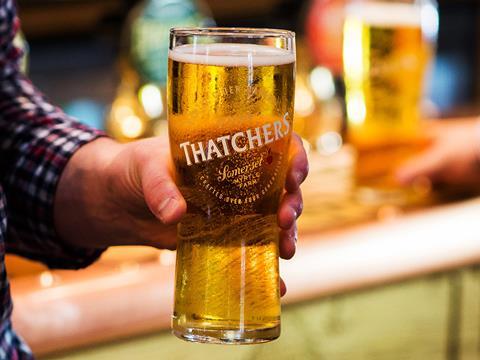
Thatchers Gold has delivered £9.4m of the overall brand’s £12.8m growth. That’s the greatest gain of any top 100 apple cider. In the wider sector, only Strongbow (7) Dark Fruit has grown more (by £22.6m).
The success is down to two factors, says MD Martin Thatcher: drinkers’ growing thirst for quality traditional cider and the supermarkets’ efforts to inject value back into their beer & cider aisles.
“People want to feel that they’re actually getting something a bit better than the norm,” says Thatcher. “That’s what we offer, packaging-wise and the liquid inside. That’s why we’ve done very well with the range reviews. The supermarkets have realised what it is consumers want; that’s what we’re supplying.”
Family-owned Thatchers’ gain has been the global drinks giants’ loss. AB InBev’s Stella (1) Cidre, Heineken’s Bulmers (48) and Molson Coors’ Carling Apple Cider have all been left with a sour taste in their mouths following the past year’s range reviews.
But Thatchers’ growth hasn’t come cheap. Average price has fallen 5.5%, driven primarily by growing sales of Gold in can multipacks. The brand has also spent big on advertising in the past year. Now it’s pushing into craft, with 330ml cans of NPDs Stan’s Barrel Roller and Leaf Twister ciders doing a roaring trade in the big four on multibuy deals.
55 (68) I Heart
Sales: £47.0m Growth: +24.7%
New listings have helped drive £9.3m growth for I Heart. Nearly half came from its fizzy wines, after the brand’s prosecco was listed by Tesco in November. Pinot noir, rosé and sauvignon blanc also won more space.
56 (57) Desperados
SALES: £45.7m GROWTH: +3.7%
Heineken’s flagship ‘speer’ may be up £1.6m, but it hasn’t been immune to range cuts: the Red and Verde spin-offs have fallen off a cliff after losing listings. NPD Desperados Dos is now in Morrisons and Asda.
57 (61) Westons
SALES: £44.8m GROWTH: +13.2%
Brits want “quality ciders that offer a point of difference”, says head of customer marketing Darryl Hinksman. For that they will pay. Vintage fetches an average of £3.53 a litre, driving most of Westons’ £5.2m growth.
58 (56) Moët & Chandon
Sales: £44.2m Growth: +1.0%
Britain’s bestselling bubbly has added £400k. This is price driven; volumes fell 0.5%, as it’s been undercut by Lanson (70). The brand is sponsoring the Queen’s tennis tournament to court the champagne set.
59 (54) Pimm’s
SALES: £41.7m GROWTH: -7.4%
Notoriously weather-dependent Pimm’s has had £3.3m wiped off its value. Diageo puts this down to a hit and miss summer in 2016. The new Cider Cup lines, less reliant on the sun, racked up £1.6m in their first year.
60 (73) Rekorderlig
SALES: £39.6m GROWTH: +18.6%
Another beneficiary of the supers’ push to end duplication and drive value, the top 100’s priciest cider is up £6.2m. Top seller strawberry & lime grew by £2.2m, NPD spiced plum and its vodka cocktails by £1.3m.
61 (58) WKD
SALES: £39.5m GROWTH: -5.8%
Back in 2010, WKD was Britain’s 37th biggest booze brand, having grown 1.1% to £63.1m. That was the last time it registered growth in this report. Now it’s pinning its hopes on a summer-long marketing push.
62 (60) Oxford Landing Estates
Sales: £39.4m Growth: -0.3%
Even with a small drop, Oxford Landing has done better than other Aussies - see Lindeman’s (51) or Banrock (98). It’s just launched its first NPD in 25 years: Marty’s Block, a four-strong premium range.
63 (59) Lambrini
Sales: £39.3m Growth: -3.6%
Lambrini’s third consecutive year of decline. All lines except Strawberry and Skinny - worth £2.1m - are down. Now it is trying a new blueberry line. It could work; blueberry is flavour of the month in cider at present.
64 (65) Calvet
Sales: £39.0m Growth: -8.9%
Squeezed supplies of vintages and rationalisation of cheaper French wine ranges hit Calvet hard, says owner Groupe GCF. It wants to increase distribution as it marks its 200th birthday - the focus of its 2018 marketing.
65 (129) BrewDog
Sales: £38.6m Growth: +170.5%
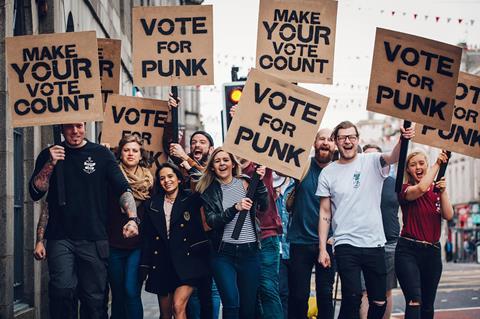
In 2013 BrewDog drove a tank through the City of London to launch its first round of crowdfunding. Now it’s rolled into the top 100 on £24.7m worth of growth, the year’s sixth biggest gain.
It’s benefited from the range cuts that hit brands such as Foster’s (3) and Carlsberg (11) so hard, with big distribution gains throughout the mults. And not just for flagship Punk IPA (up £13.2m); nine new brews have hit the shelves in the past year, plus a 12-bottle mixed multipack. Grapefruit IPA Elvis Juice has racked up £2.1m since launch last summer, making it BrewDog’s third bestseller after Punk and pale ale Dead Pony Club. “We’ve seen fantastic shopper engagement for our new mixed can packs and larger Punk IPA multipacks,” says BrewDog head of sales Steve Ricketts. “Development of craft ranges can only be good for drinkers, as well as newcomers to the category.”
With BrewDog now sharing the top 100 with the brands it has called ‘generic… made by people who just don’t care’ (among other things), it’s adopting their tactics. This year it ran its first ads, having hitherto relied solely on publicity stunts to build the brand (see the tank, and right).
Now it’s moving into chillers front of store. “This is a real focus for us in terms of retailer education,” says Ricketts. Spoken like a true punk.
66 (72) Canti
Sales: £37.1m Growth: +11.8%
Prosecco is booming but in own label, mostly. Canti is the only branded prosecco in the top 100, having entered in 2015. Since then sales have jumped 50%. This year’s marketing is celebrating its 70th anniversary.
67 (66) Cobra
Sales: £36.8m Growth: -0.8%
Cobra’s been bitten by world lagers such as Heineken (41) and Tyskie (76), with volumes down 2.2%. It wants to grow by pushing itself as the ultimate accompaniment to curry and playing on its Indian heritage.
68 (70) Malibu
SALES: £35.5m GROWTH: +6.5%
February 2016 launch Malibu Pineapple is responsible for most of the flavoured rum’s £2.2m growth. The variant is now worth £1.9m. With sales of the core coconut product flat, NPD is increasingly important.
69 (83) Jim Beam
SALES: £35.5m GROWTH: +22.2%
Britain’s second biggest US whiskey has put an extra £6.5m through the tills, with its core bourbon and Red Stag contributing most. Undercutting Jack Daniel’s (8) by an average of £7.44/litre helped.
70 (71) Lanson
Sales: £35.2m Growth: +8.6%
Lanson is the fastest growing top 100 champers. Its status as Wimbledon’s official fizz has helped. So has its price. A litre sells for £30.64 on average. That’s £8.03 less than Moët (58) and £12.20 less than Veuve (85).
71 (62) Martini
Sales: £35.1m Growth: –16.1%
London bartender Davide Zanardo has just been named Martini’s brand ambassador for Northern Europe. The vermouth will be hoping the ex Chiltern Firehouse man can help claw back £6.7m of lost sales.
72 (82) Chekov
Sales: £34.4m Growth: +23.9%
Indie fave Chekov fell victim in early 2016 to a counterfeiting scam that will still be fresh in the minds of many. But the scandal failed to stymie the value voddy - which picked up pace with volumes up 23.8%.
73 (85) Greenall’s
Sales: £33.7m Growth: +20.1%
The UK’s current passion for gin saw Greenall’s ramp up its British heritage with a pack redesign in the spring - as the brand headed toward an extra £5.6m in value sales. It’s the cheapest gin in the top 100.
74 (99) Tanqueray
SALES: £33.5m GROWTH: +57.3%

That Diageo is now spending as much on this as it is on Gordon’s (9), which is worth more than seven times as much as Tanqueray, speaks volumes about the opportunity it sees in premium and super-premium gin.
“We now have an equal focus on Gordon’s and Tanqueray, whereas in the past the vast majority of our efforts would have been on Gordon’s,” says off-trade sales director Guy Dodwell. “There’s been some distribution growth for Tanqueray, which is clearly differentiated from Gordon’s.”
Drinkers have been paying an average of £23.51 for a litre of Tanqueray, with regular £20 deals intended to convince shoppers to trade up from standard fare such as Gordon’s, which has been selling for £4.45 less per litre on average.
Super-premium Tanqueray 10 is also in fine fettle. Sales have surged 72.4% to £4.3m. Fetching an average of £39.56/litre, Tanqueray is in the same price bracket as craft brands such as Sipsmith and Hendrick’s and it is by far the priciest gin in the top 100. “Gin is on fire but within that we have this premiumisation trend,” adds Dodwell. “Both Tanqueray variants are well placed to capitalise on that.”
But the growth isn’t all down to Diageo, suggests Dodwell. “You have to call out Fever-Tree for the great work they’ve done. They have done a great job in democratising premium spirits and mixers,” he says.
75 (63) Viña Maipo
Sales: £33.2m Growth: -15.1%
Maipo isn’t benefiting from the Chilean wine boom. Down £5.9m, it’s the only top 100 Concha y Toro brand in decline. Instead Brits are quaffing a heavily discounted Isla Negra (29), down 4.8% in price.
76 (80) Tyskie
SALES: £32.8m GROWTH: +12.1%
Up £3.5m, thanks to growth in world lager and its popularity among expat Poles. Selling at an average of £2.61/litre, Tyskie is cheaper than most other world lagers, reflecting its reliance on the can format.
77 (91) Hobgoblin
SALES: £32.2m GROWTH: +10.4%
Hitting the 77 spot is impressive, given that Hobgoblin first crept into the top 100 in 2015. Serious promotion around Halloween and multibuys throughout the year are paying off. Paler variant Gold is up 26.3% to £7m.
78 (74) Disaronno
SALES: £32.3m GROWTH: +4.9%
More proof that differentiation is crucial in booze, the top 100’s only Italian almond liqueur is going from strength to strength. Sales are up £1.5m, thanks in part to a push aimed at encouraging its use in cocktails.
79 (64) Frosty Jack’s
Sales: £31.9m Growth: -14.6%
Forget craft. For some, choice of drink is still down to price. See Buckfast’s (91) top 100 debut or the £2.5m growth of K (109) for proof. But Frosty, the cheapest brand in the list, is struggling. It’s lost £5.4m as it’s lost space.
80 (67) Southern Comfort
SALES: £31.9m GROWTH: -11.0%
Disappointing, given Hi-Spirits’ claim it would take SoCo “to the next level” after securing UK distribution in 2016. A new look emphasises the brand’s New Orleans roots. Smart, given the current vogue for Americana.
81 (77) Jameson
SALES: £31.3m GROWTH: +4.5%
Original has delivered £400k of the only top 100 Irish whiskey’s £1.3m gain. Premium lines Caskmates and Crested and new RTDs, which Jameson says are growing engagement with Irish whiskey, are behind the rest.
82 (79) Torres
SALES: £30.5m GROWTH: +4.5%
With own label winning in wine, a £1.3m gain is a solid result. Deals on Vina Sol have been key, keeping average price at about £6.50/bottle. Expect more growth from Torres. It won six new Tesco listings in March.
83 (94) Trivento
Sales: £30.1m Growth: +31.6%
Argentinian malbec is bang on trend and Trivento is up £7.2m. Concha y Toro, which is pushing the brand as the Official Wine of BBQ, says Brits are trading up, so it’s launched a Private Reserve Malbec at £10 a pop.
84 (88) Black Tower
Sales: £30.0m Growth: -2.3%
Black Tower is down £700k and volume has dipped 1%. As the core line falls, more people are picking up cheaper spin-off B by Black Tower (up 2.8% in volume; down 0.9% in value), eroding overall value further.
85 (81) Veuve Clicquot
Sales: £29.6m Growth: +1.2%
In terms of big name champers, Veuve is third, after Moët (58) and Lanson (70), and growth has slowed. But the prosecco boom has seen retailers, such as Iceland, give more space to Veuve and its rivals.
86 (84) Holsten
Sales: £29.1m Growth: -0.2%
In light of punters’ growing thirst for craft and with only five SKUs listed across the major mults, Carlsberg’s Holsten might have been expected to struggle. But the c-store perennial held its own.
87 (90) Freixenet
Sales: £28.2m Growth: +5.3%
Freixenet’s defied the decline in cava with a solid start for NPD Ice (now worth £2.3m), recently extended with a rosé variant, and core line Cordon Negro (up 33%). Now the Spanish brand has launched a prosecco.
88 Amstel
SALES: £28.2m GROWTH: +716.9%

Is Amstel a standard tinnie or a premium Continental lager? The latter, if you ask brand owner Heineken. Yet it’s starting to look as if the supermarkets think otherwise.
Amstel’s £24.7m growth is the year’s fifth greatest gain, driven by big distribution wins after its March 2016 relaunch, which saw it roll out in 440ml cans for the first time and its brown bottle replaced with green, a move Heineken said would better reflect the beer’s ‘premium’ nature. In June 2016, its first TV ads hit UK screens, featuring Jaap, owner of Amsterdam’s smallest bar and aimed at trumpeting Amstel’s Dutch heritage. But most of the Amstel sold in Britain is made in Manchester, not Amsterdam. With an abv of 4.1%, in terms of alcohol content it’s closer to UK-brewed Foster’s (3) or Carling (5) than the Continental imports it is emulating. Yet, selling for an average of £2.12/litre, Amstel has been fetching much more than these - in the case of Carling 55p/litre more.
Heineken says it’s justified the price with TV ads, a tie-up with cycling event RideLondon and new labels highlighting Amstel’s 147-year history. The retailers seem less convinced. Tesco delisted the brand in February and it’s suffered big losses in the rest of the big four. If Amstel’s first year isn’t going to be its last, it’s going to have to do more to justify its price. Or lower it.
89 (100) Mud House
SALES: £27.3m GROWTH: +21.4%
Up £4.8m, thanks in part to the vogue for Kiwi wine and a deal with the British & Irish Lions (Welsh rugby star George North is new poster boy). As the fifth priciest top 100 plonk, it reflects the push to posher wines
90 (89) Jägermeister
SALES: £27.0m GROWTH: -1.6%
Jägermeister’s performance proves NPD can sometimes just cannibalise existing products. 2015 launch Jägermeister Spice sales have doubled, but that growth appears to have come from the pricier core product.
91 (104) Buckfast Tonic Wine
SALES: £26.9m GROWTH: +7.9%
A new entry on growth worth £2m. Impressive, given that it isn’t in any of the big four. Gains in English c-stores and Co-op, away from Bucky’s Scottish heartland, were key. A new 5cl bottle also helped.
92 (69) High Commisioner
SALES: £26.2m GROWTH: -20.0%
Bargain blended Scotch High Commissioner’s days as a top 100 dram seem numbered, after it lost a fifth of it sales thanks to dwindling distribution and growing competition in its core convenience market.
93 (86) Glenfiddich
SALES: £26.2m GROWTH: -5.6%
The original single malt is battling stiff competition in premium whisky, losing ground to brands such as Talisker (145) and the pricier Johnnie Walker (116) variants. But the core 12 Years Old is holding its own.
94 (95) Sharp’s
SALES: £26.2m GROWTH: +13.9%
Sharp’s volumes are up 15.3% - that’s £3.2m in sales - when traditional ale brands like Fuller’s (114) are struggling. Newer beers Atlantic Pale Ale (up 67%) and Wolf Rock IPA (up 41.2%) are riding the craft wave.
95 (120) Birra Moretti
SALES: £26.1m GROWTH: +53.5%
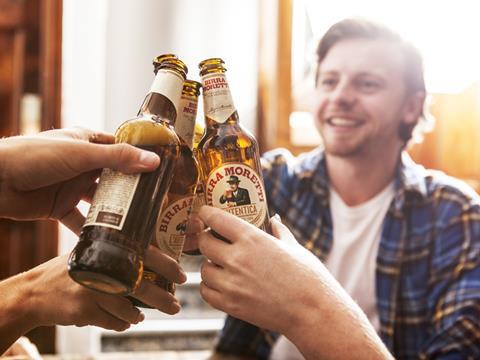
Can Moretti ‘do a Guinness’ (28) and drive further growth with a series of spin-off brews? That’s the aim of Moretti’s Le Regionali duo, comprising alla Siciliana (5.8% abv) and alla Toscana (5.5% abv), which was launched in May.
“We know shoppers are interested in more exciting and premium options, particularly matched with food,” said Heineken category & shopper marketing director Toby Lancaster on announcing the launch. “This is the opportunity for the grocery channel to offer consumers delicious Italian beers to enjoy at home with food and benefit from incremental growth in the beer category.”
Not that Moretti necessarily needs the new variants, which have picked up listings in Sainsbury’s, Morrisons and Asda. Sales have surged £9.1m, driving it into our ranking for the first time. Birra Moretti now costs an average of £2.93 per litre, positioning it firmly in the premium arena. Nevertheless, it’s still 90p/litre cheaper than fellow Italian lager Peroni (22).
A food-led approach is designed to play up Birra Moretti’s heritage and relationship with Italian cuisine. Birra Moretti’s annual food festival, the Moretti Gran Tour, took place earlier this month as part of the Barclaycard British Summer Time music festival in London’s Hyde Park, featuring live DJs and a range of oh-so-trendy street food traders
96 (78) First Cape
Sales: £25.6m Growth: -9.1%
South Africa’s First Cape has been falling since 2011, when it was worth £120m. Drinkers trading up to pricier plonk (Cape is the top 100’s third cheapest) and switching to Argentinian and Chilean haven’t helped.
97 (92) Cono Sur
Sales: £24.2m Growth: 0%
Growth has ceased for Cono Sur after sales almost tripled since 2014. A tough harvest in Chile and exchange rate fluctuations have hit hard, says Concha y Toro, which is continuing the brand’s Tour de France activity.
98 (76) Banrock Station
Sales: £23.6m Growth: -22.6%
Banrock was half way up our list in 2014, now it’s hanging on by a thread. Big distribution losses (the mults have binned 25% of its SKUs) mean its percentage loss is the greatest of all of Accolade’s top 100 brands.
99 (107) Old Mout
SALES: £22.9m GROWTH: +23.2%
Bulmers’ (48) loss was Mout’s gain as the supers cut fruit ciders to focus on pricier lines like this. There’s a limit: it had three of its four lines axed by Tesco in a pricing spat in March. Now it’s spending £5m on ads.
100 (98) Harveys
SALES: £22.7m GROWTH: –2.1%
In spite of all the hoopla about a sherry renaissance in trendy bars, the top 100’s only sherry brand looks set to bow out of the ranking. Not even £10/litre deals could save volumes, which fell 1.1%.
Topics
Britain's Biggest Alcohol Brands 2017: the battle for the booze aisles
- 1
- 2
- 3
- 4
- 5
- 6
 Currently reading
Currently readingBritain's Biggest Alcohol Brands 2017








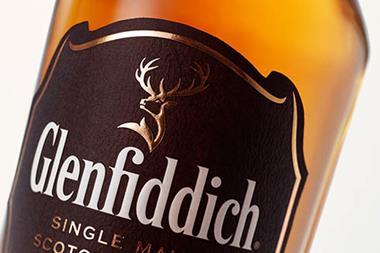
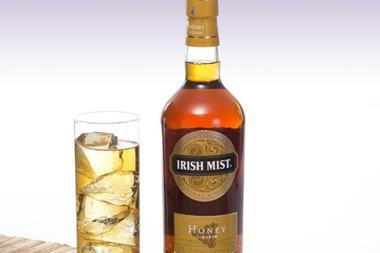


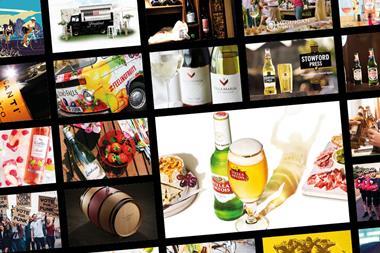
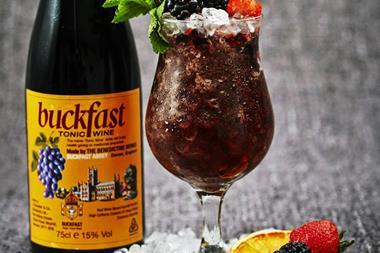
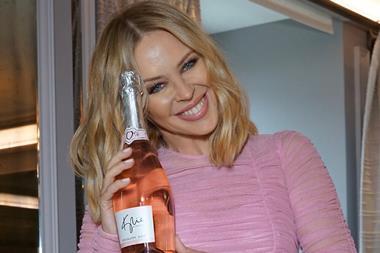

![drinks_RGB[48]](https://dmrqkbkq8el9i.cloudfront.net/Pictures/380x253/2/9/2/297292_drinks_rgb48_667484.jpg)

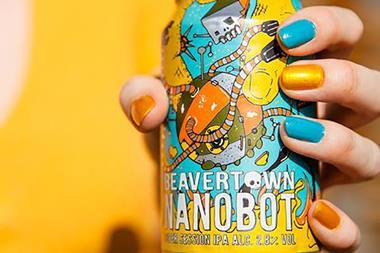
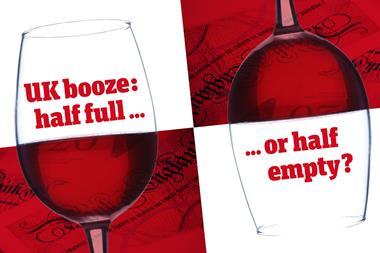
No comments yet